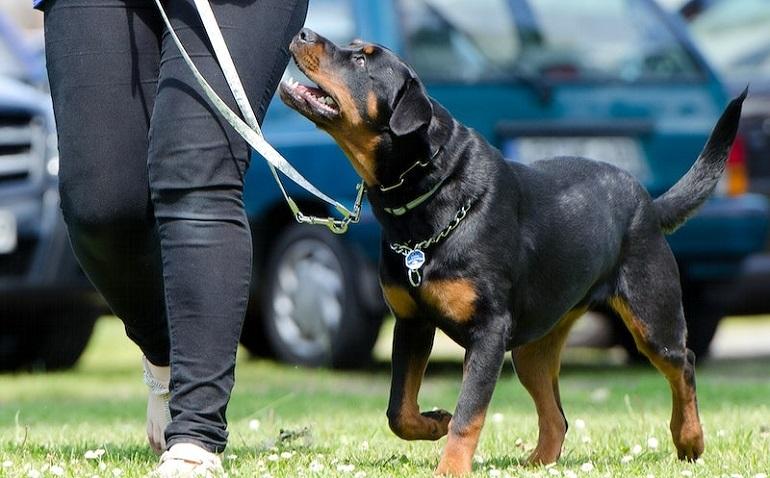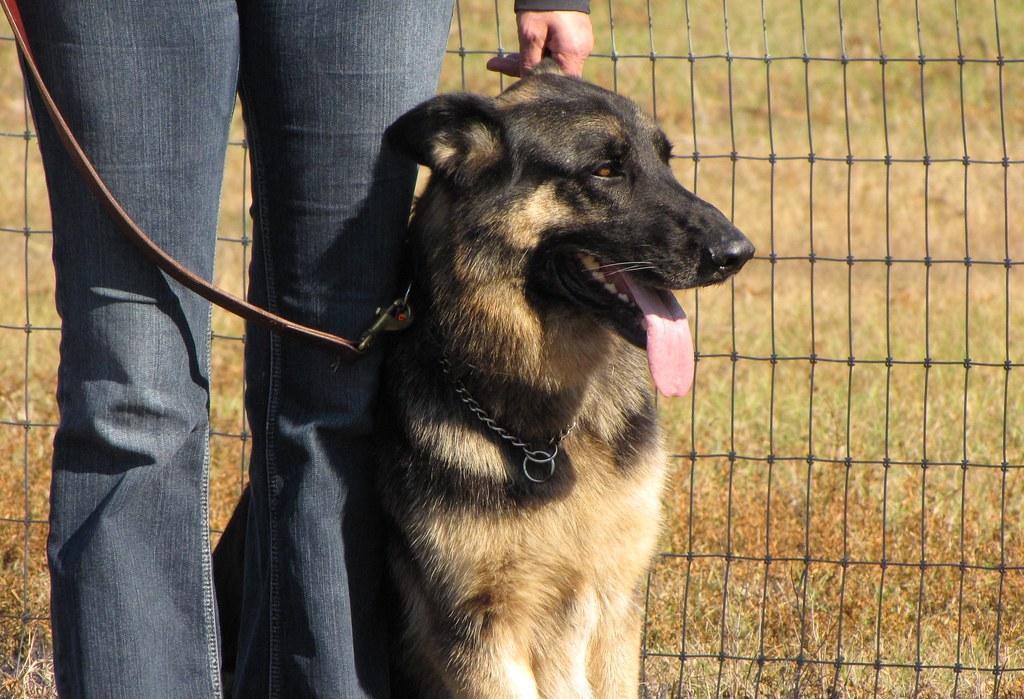Can stubborn dogs be trained?

When it comes to training our beloved furry companions, the question often arises: can stubborn dogs be trained? The answer is a resounding yes! While some dogs might test our patience more than others, with the right approach, dedication, and understanding, even the most headstrong pups can learn to become well-behaved and obedient companions.
It might take a bit more time and effort, but with the right approach, patience, and consistency, even the most headstrong pups can learn to follow commands.
Can stubborn dogs be trained?
Training a stubborn dog often involves finding the right motivators. Some dogs are less food-oriented and more interested in toys, playtime, or even simple praise. Figuring out what truly gets your dog excited can make a significant difference in their training progress. Using positive reinforcement techniques, where good behavior is rewarded, can help reshape their behavior over time. It’s also important to keep training sessions short and engaging to prevent boredom or frustration.
Can stubborn dogs be trained (at home?)
It is absolutely possible to train stubborn dogs at home. While they might be a bit more challenging to work with, with some patience, consistency, and the right techniques, you can see positive results. The key is to understand your dog’s personality and find what motivates them.
Positive reinforcement works wonders for training at home. When your dog follows commands, reward them with treats, praise, or playtime. This helps them associate good behavior with positive outcomes. Short, regular training sessions can keep them engaged and prevent frustration. It’s also important to be gentle yet firm in your approach. With time and effort, even stubborn dogs can learn to behave well and be happy companions.
What causes a dog to be stubborn?
Certainly, a dog’s stubborn behavior can be caused by various factors. Here are some points to consider:
- Temperament: Just like people, dogs have their personalities. Some breeds are naturally more independent and can come across as stubborn.
- Lack of Clear Communication: Dogs might not understand what we want. If our cues are unclear or inconsistent, they may not respond as desired.
- Lack of Motivation: If there’s nothing in it for them, dogs might resist doing what we ask. Finding the right rewards, like treats or playtime, can help motivate them.
- Fear or Anxiety: Some dogs may appear stubborn when they’re scared or anxious. In these cases, they might not want to obey because they’re afraid of the outcome.
- Previous Experiences: If a dog’s past experiences were negative when they followed commands, they might be hesitant to obey in the future.
- Lack of Training: Sometimes, dogs might not have had proper training or socialization, leading to a lack of understanding about how they should behave.
- Health Issues: Physical discomfort or pain can make dogs reluctant to follow commands. It’s important to rule out any health problems.
- Too Many Distractions: Dogs have a keen sense of smell and hearing, so if there are too many interesting smells or sounds around, they might not pay attention to your commands.
Understanding the underlying reasons for your dog’s stubbornness is key to addressing the behavior effectively. With patience, positive reinforcement, and consistent training, even stubborn dogs can learn to be more obedient and well-behaved companions.
How to train a stubborn dog? Effective Training Approaches
Let’s delve into the world of training stubborn dogs and explore effective training techniques to bring out their best behavior.
Training a stubborn dog can be a rewarding yet challenging journey. With the right techniques and a patient approach, you can turn even the most headstrong pup into a well-behaved and responsive companion. Let’s explore some effective training approaches that can help you achieve success.
5 Effective Strategies to Train a Stubborn Dog
Training a stubborn dog can be a rewarding journey with the right strategies and a patient approach. Here are five straightforward and effective methods to help you train your stubborn furry friend:
1. Positive Reinforcement: Using positive reinforcement is a powerful tool in training. Reward your dog with treats, praise, or playtime when they exhibit the desired behavior. This approach encourages them to associate good behavior with positive outcomes, motivating them to cooperate.
2. Consistency and Repetition: Consistency is key in training any dog, especially a stubborn one. Use the same commands and cues consistently, and repeat training sessions regularly. Repetition helps your dog understand what’s expected of them and reinforces their learning.
3. Short and Engaging Sessions: Stubborn dogs might have shorter attention spans, so keep training sessions brief yet engaging. Aim for sessions lasting about 10 to 15 minutes. This prevents boredom and frustration, keeping your dog focused and receptive.
4. Break Tasks into Small Steps: Complex tasks can overwhelm stubborn dogs. Break down commands into smaller, achievable steps. For instance, if you’re teaching “stay,” begin with a short pause before gradually extending the duration. This approach builds confidence and prevents your dog from feeling overwhelmed.
5. Use High-Value Rewards: Identify what motivates your stubborn dog the most. Some dogs are food-driven, while others prefer toys or affection. Incorporate high-value rewards during training to capture their attention and maintain their enthusiasm. This strategy increases the likelihood of them following your commands.
Remember, training a stubborn dog requires patience, consistency, and a positive attitude. By applying these strategies consistently, you’ll witness gradual improvements in your dog’s behavior and responsiveness.
How to train a stubborn dog to come when called?
Training a Stubborn Dog to Come When Called: Simple Steps for Success
Teaching your stubborn dog to come when called can be a rewarding journey. Start indoors in a quiet space, using their name followed by the command “come,” and reward them with treats or a toy when they respond. Gradually increase the distance and move outdoors with a long leash to give them some freedom while staying in control. Choose distraction-free areas, be patient and positive, and keep the command consistent. Practice regularly in different places, making it a fun game by running away and encouraging them to chase you. With patience and persistence, your dog will learn to come when called, ensuring their safety and your peace of mind.
Remember, training a stubborn dog takes time and patience. Be persistent, and celebrate every successful recall. With consistent effort and positive reinforcement, your dog will eventually learn to come when called, ensuring a safer and more enjoyable outdoor experience for both of you.

How to train a stubborn dog to sit
Training a Stubborn Dog to Sit: Simple and Effective Steps
Teaching a stubborn dog to sit can be a rewarding endeavor that lays the groundwork for good behavior. Begin in a quiet, distraction-free area and arm yourself with delicious treats as positive reinforcement. Hold a treat close to their nose and gently move it upwards and backward, causing their rear to lower naturally. As you guide them into the sitting position, use a clear and consistent “sit” command. The moment they sit, offer a treat and shower them with praise to reinforce the action positively.
Consistent practice is essential. Keep training sessions short and enjoyable, focusing on building familiarity and confidence. Once your dog reliably responds to the “sit” command, introduce a hand signal alongside the verbal cue. Gradually reduce treat rewards and rely more on praise and affection, solidifying their understanding of the command. Remember, patience is key. Not all dogs grasp the concept immediately, so maintain a positive and patient attitude throughout the process.
Extend training to different environments and scenarios, enabling your dog to generalize the “sit” command. Whether it’s at home, in the park, or during walks, consistently using the command strengthens their obedience. By incorporating these steps into your training routine, you’ll soon witness your stubborn companion mastering the art of sitting, setting the stage for a well-mannered and responsive furry friend.
How to train a stubborn dog to potty outside
Training a Stubborn Dog to Potty Outside: Effective and Simple Techniques
Teaching a stubborn dog to the potty outside is a fundamental aspect of successful house training. While it requires patience and consistency, the process can be made smoother with the right approach.
Begin by establishing a routine. Set a regular schedule for feeding, playtime, and bathroom breaks. Dogs thrive on routine, and they’ll learn to anticipate potty breaks outside. Choose a designated spot in your yard where you want your dog to potty. The scent will help them associate the spot with the action, making it easier for them to understand.
Supervision is crucial. When indoors, keep a close eye on your dog, especially after eating, drinking, or waking up. Signs like circling or sniffing suggest they need to go, so be ready to take them outside promptly. When your dog eliminates outside, offer immediate praise, a treat, or affection. Positive reinforcement helps them understand that pottying outdoors is a good thing. Avoid punishment if your dog has an accident indoors. Instead, clean up accidents calmly and reinforce outdoor success.
Be patient, as stubborn dogs might take longer to grasp the concept. Stay patient and maintain a calm demeanor throughout the training process. Stick to the schedule for consistent potty breaks at the same times each day. Use cue words like “potty” or “outside” when you take your dog to its designated spot. Over time, they’ll associate these words with the action.
During training, restrict your dog’s access to the house using baby gates or closed doors. This minimizes the chances of accidents and helps reinforce the outdoor potty routine. As your dog improves, celebrate their successes. Gradually extend the time between potty breaks as they show consistent understanding. Remember, potty training takes time and requires understanding your dog’s signals. By creating a routine, offering positive reinforcement, and maintaining a patient and consistent approach, you’ll guide your stubborn dog towards successful outdoor pottying habits, creating a clean and harmonious living environment for both of you.
How to train a stubborn dog to stop barking
Training a Stubborn Dog to Stop Barking: Simple and Effective Techniques
Teaching a stubborn dog to stop excessive barking needs patience and the right approach. Dogs bark to talk, but too much barking can be a problem. First, figure out why your dog barks a lot, like when they see people or hear noises. Teach them a command like “quiet” and reward them when they listen, which helps them learn.
Give your dog things to do, like play or puzzles, to stop boredom and barking. Make home peaceful, and help your dog get used to what makes them bark. Keep training the same way, ask experts if you need, and check if your dog might be worried. It might take time, but with love and training, your stubborn dog can learn to bark less and make your home quieter.
Conclusion
In the world of dog training, the question remains: Can stubborn dogs be trained? The resounding answer is yes. While some furry friends may test our patience more than others, the right approach, commitment, and understanding can lead even the most headstrong pups to become well-behaved companions. It might require extra effort, but with the right techniques, consistency, and patience, even the most persistent dogs can learn to follow commands and thrive as obedient members of the family. So, embrace the journey, armed with positivity and the knowledge that every dog’s potential can be unlocked through love, dedication, and effective training methods.
FAQ
How do you correct a dog when it barks?
Dogs often show stubbornness during their adolescent stage, which usually occurs around 6 months to 2 years of age. This is when they're exploring their independence and testing boundaries. It's important to remain patient and consistent in training during this time, using positive reinforcement to encourage good behavior. As dogs mature, their stubbornness usually decreases, and they become more responsive to training and commands.
How to train a stubborn dog to drop it?
Training a stubborn dog to "drop it" involves patience and positive reinforcement. Start with a favorite toy and offer a tasty treat. When your dog holds the toy, show them the treat and say "drop it" in a calm voice. If they release the toy, reward them with the treat and praise. If they don't let go, avoid pulling or forcing; instead, wait patiently until they release it. When they do, immediately reward. Consistent practice and rewards will help your dog associate "drop it" with good things, making them more likely to let go of items when asked.
Are stubborn dogs smarter?
Stubbornness in dogs doesn't necessarily mean they're smarter or less smart. It's more about their personality and how they respond to training. Some stubborn dogs might be independent thinkers, while others might need more time to understand commands. Intelligence varies among all dogs, regardless of stubbornness. What's important is finding the right training approach that suits your dog's personality, so they can learn and thrive.
how to train a stubborn puppy?
Training a stubborn puppy requires patience and consistency. Start with basic commands like "sit" and "stay." Use positive reinforcement, rewarding your puppy with treats and praise when they obey. Keep training sessions short and frequent to prevent boredom. Be clear in your commands and use a firm but gentle tone. Redirect unwanted behaviors by offering an alternative, and avoid punishment. Gradually increase the difficulty of commands as your puppy improves. Consistency is key, so everyone in the household should use the same commands and methods. Remember, building a strong bond with your puppy will make training more effective.




